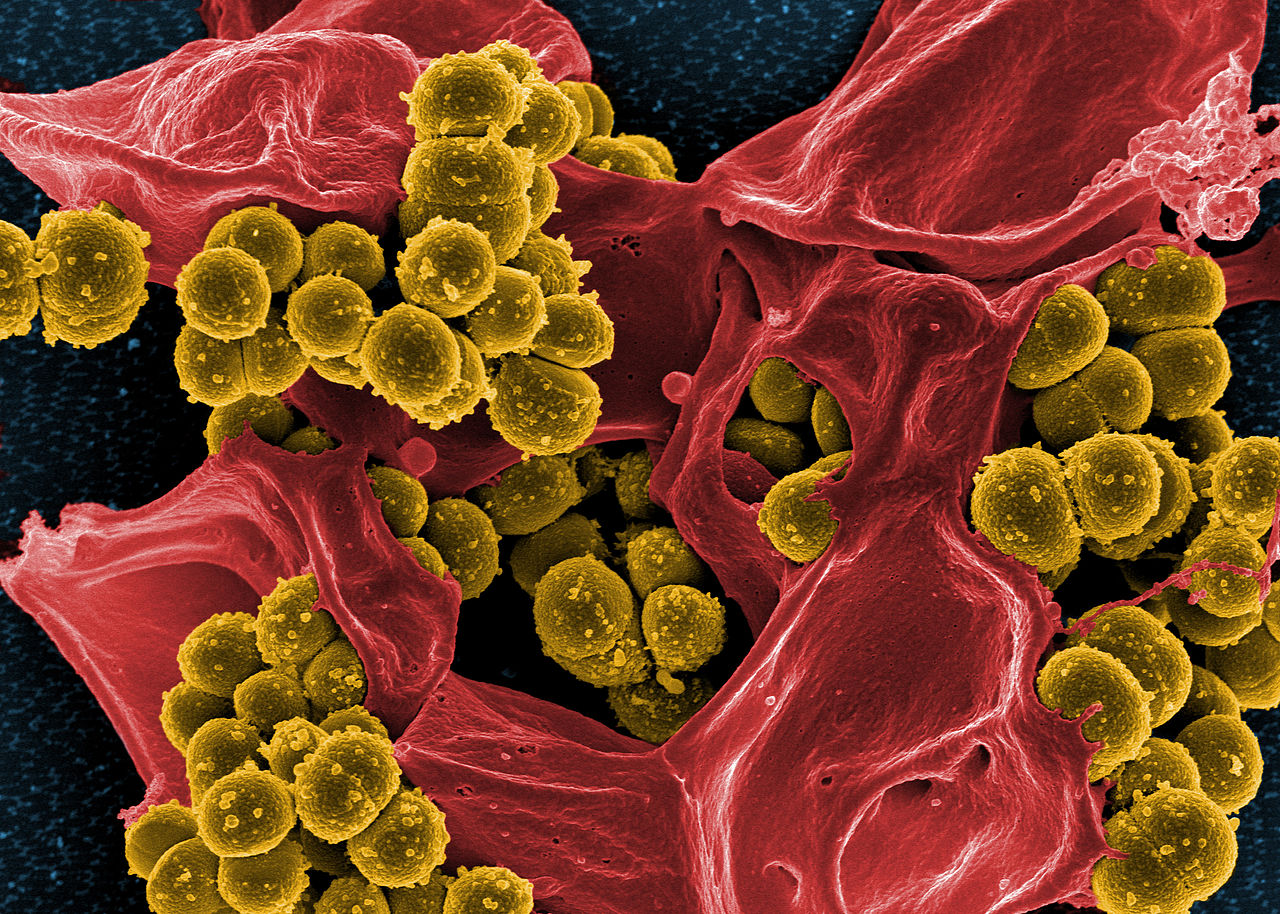MRSA at Sea and Maritime Trades
 When we hear or see the term MRSA, we think of outbreaks in hospitals and nursing homes. But MRSA can be a problem anyplace people work and live in close quarters. According to the CDC, one in three people carries staph bacteria. It lives on the skin and in the nose. The CDC also reports that approximately one in 50 people carry MRSA. In the United States, cases of MRSA are responsible for about 90,000 serious infections and over 18,000 deaths per year. Infections should not be ignored, as they can spread quickly to cause pneumonia, bloodstream infections, sepsis, and in very serious cases, loss of limbs or death.
When we hear or see the term MRSA, we think of outbreaks in hospitals and nursing homes. But MRSA can be a problem anyplace people work and live in close quarters. According to the CDC, one in three people carries staph bacteria. It lives on the skin and in the nose. The CDC also reports that approximately one in 50 people carry MRSA. In the United States, cases of MRSA are responsible for about 90,000 serious infections and over 18,000 deaths per year. Infections should not be ignored, as they can spread quickly to cause pneumonia, bloodstream infections, sepsis, and in very serious cases, loss of limbs or death.
What is MRSA?
MRSA is short for methicillin-resistant Staphylococcus Aureus, or any strain of staph bacteria that has become resistant to antibiotics. The very same class of antibiotics that were once used to treat these infections are no longer effective due to the mutation of the bacteria.
Who gets MRSA?
MRSA is very common in crowded living spaces. Outbreaks are often in the news regarding hospitals and nursing homes, but MRSA outbreaks are also common among sports teams, military personnel, prisons, daycares, schools, and fishing vessels. MRSA is also common in professions were workers are susceptible to cuts and abrasions that allow bacteria to enter the body. The Centers for Disease Control and Prevention report that MRSA is most frequently an issue among persons where the 5 C’s are present:
1. Crowding
2. Contact (skin-to-skin)
3. Compromised skin (cuts or abrasions)
4. Contamination (bacteria living on surfaces)
5. Lack of general Cleanliness
What are the symptoms of MRSA?
Most infections begin with a sore or bump on the skin that looks like an insect bite. The site of the infection is generally red, swollen, and warm to the touch. Often the wound weeps liquid, blood, or pus. Fever and all over achiness can be present.
How can MRSA be prevented at sea?
MRSA can be prevented through disinfecting, good hygiene, and skin protection during heavy labor. Not all cleaning products will kill MRSA, but a fresh solution of 1-part household bleach to 9 parts water is highly effective. A fresh solution is important, as bleach dissipates after several hours. This solution should be made fresh right before use, then sprayed on high-touch surfaces (such as tables, sinks, faucets, door handles, switches, shower stalls, rails, etc). Here is a list of preventative measures recommended by the CDC:
• Disinfect regularly with a bleach and water solution
• When doing heavy work, protect hands with gloves
• Wash hands, body, clothing, and bedding regularly
• Never share towels, razors, deodorant or bar soap
• Wash and cover any cuts, abrasions, or wounds with clean and waterproof bandages until completely healed
What to do if you believe you have an infection?
Report the infection to your supervisor or captain. Jones Act or Maritime Law requires the party to report any work-related injury within seven (7) days, but don’t wait that long. The law requires your employer to see that you receive medical treatment from a doctor of your choice. If you are at sea and it is serious, the ship should call on the Coast Guard to medevac you to a hospital. The ship can also consult with a physician by phone or radio. For more information, see The First 6 Steps. Infections of any kind should not be taken lightly, as they can spread rapidly. If left untreated, MRSA can become deadly.
 Maritime Injury Law Blog
Maritime Injury Law Blog

